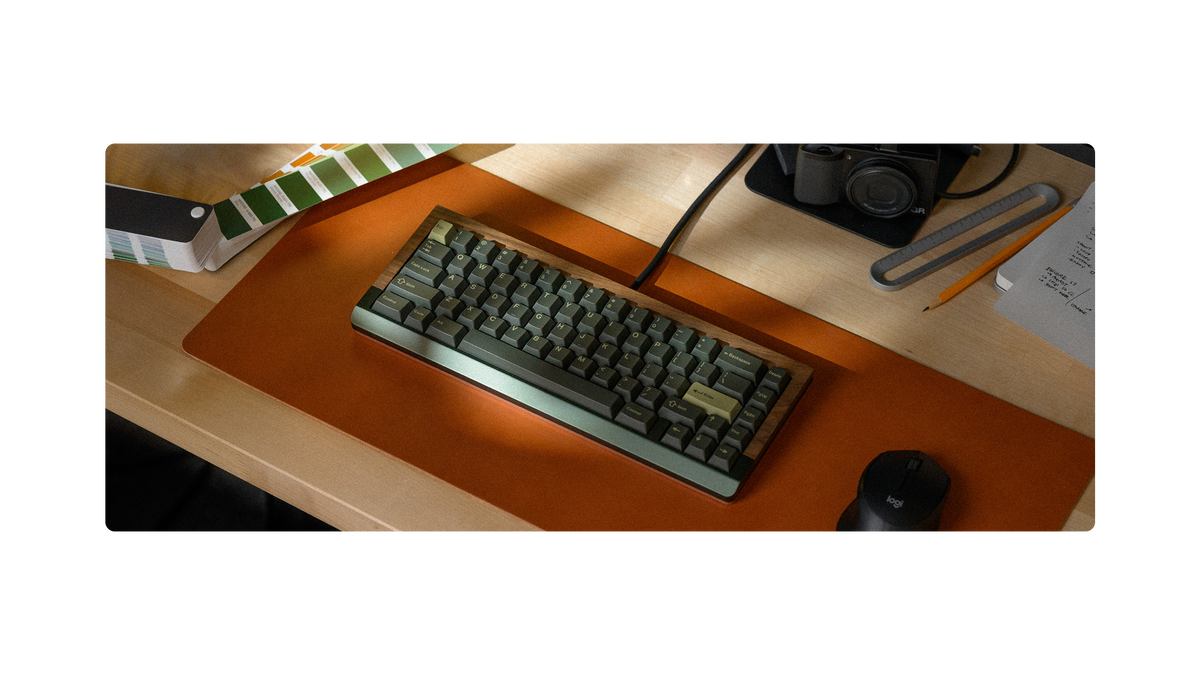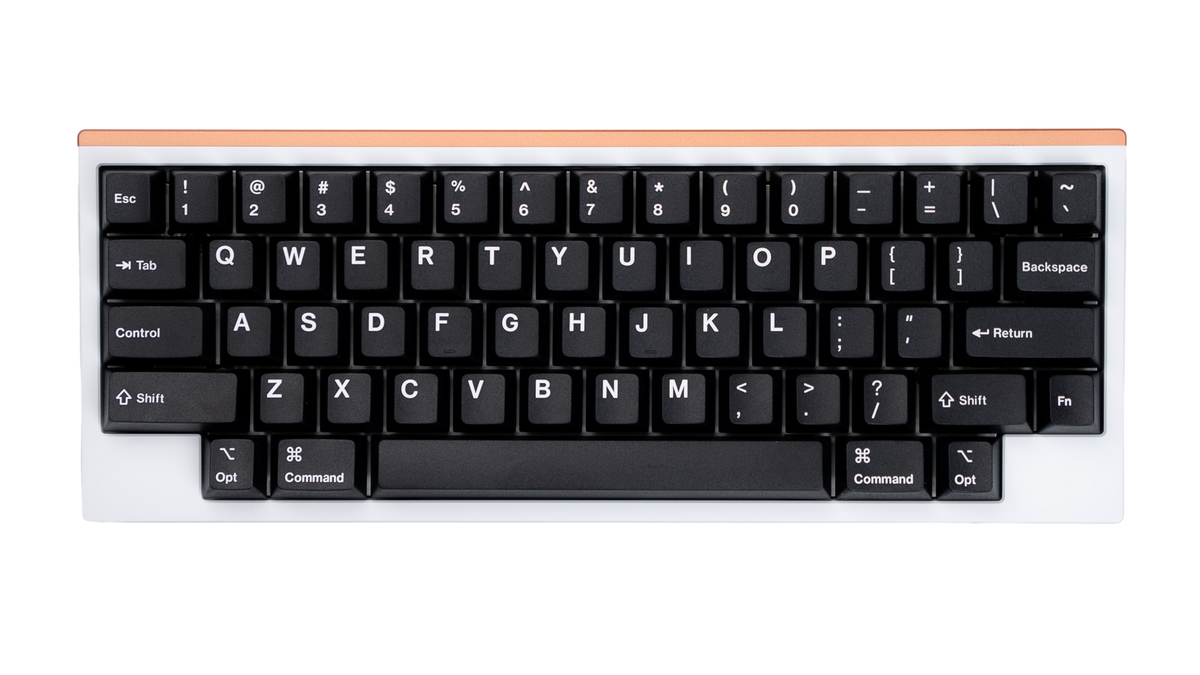Eighty 2020
Build Time: 45-90 minutesParts
- Case
- PCB
- Plate
- Daughterboard
- Bottom Gasket
- Plate Foam
- Silicone Feet x2
- Fastener Pack
-
Stabilizers
Not Included
-
Switches
x90Not Included
-
Keycaps
Not Included
Preparation
Check that you have the required parts and tools listed above. We recommend the following steps to get the most out of your Encore.
Lubing Stabilizers: This reduces the rattling sounds that stock stabilizers produce. We have our own video tutorial available here.
Lubing Switches (optional): This dampens the sound of your switches and increases their smoothness. Lubing switches is a time-consuming process, but the results are noticeable. Taeha Types and Alexotos have video tutorials available for this as well.
Step 1: Detach Bottom Case
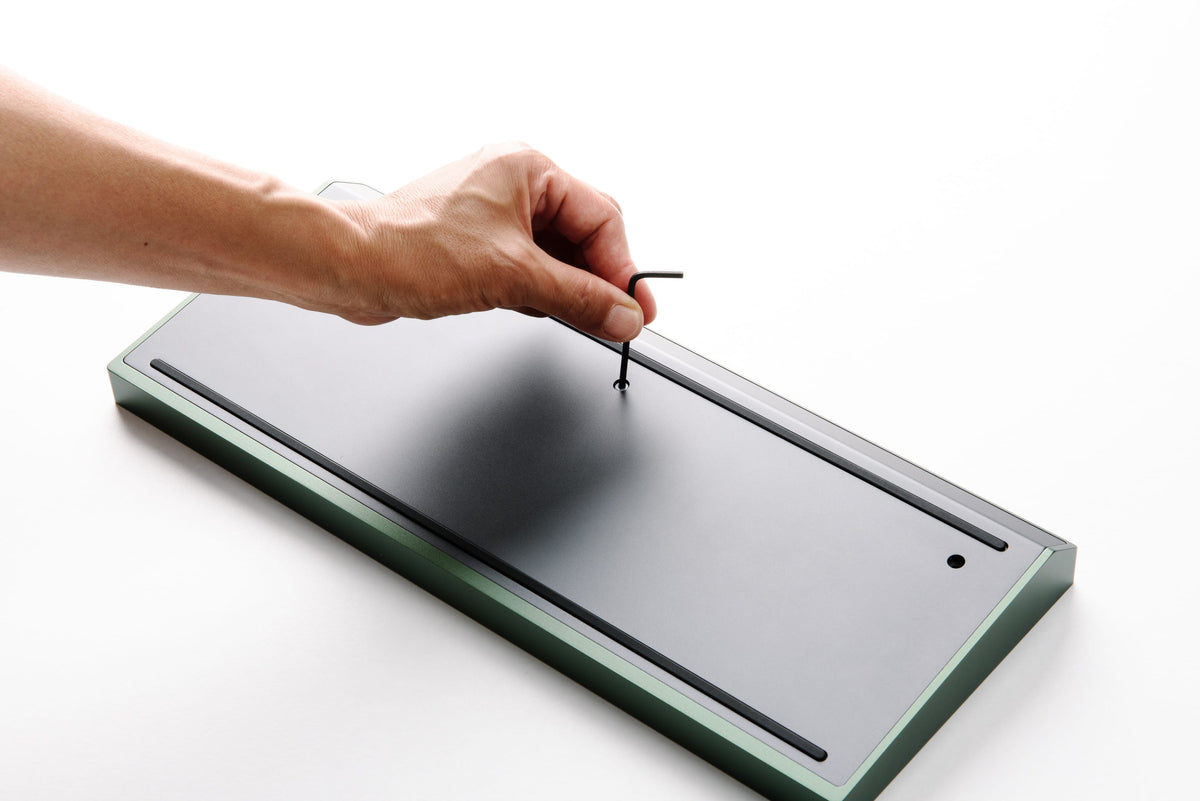

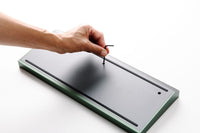
-
- Carefully place the Eighty facedown.
-
- Use the provided 2.5mm hex tool to remove the plastic placeholder screw and remove the bottom case from the assembly.
Step 2: Install Feet
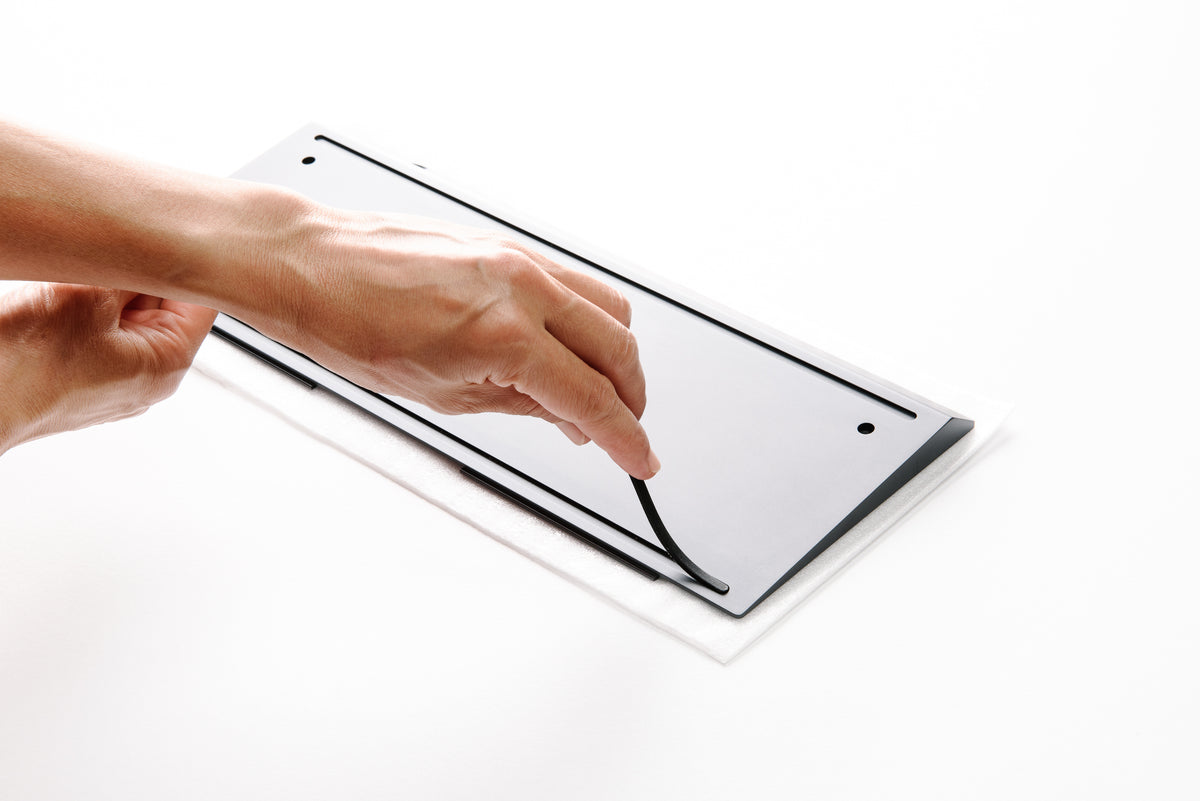

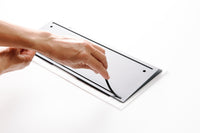
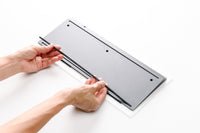
-
- Align one end of the foot in one corner of the recessed channel, then gently lower the strip into place. Take care not to stretch the foot.
-
- Press on the feet to ensure they are properly adhered, smoothing out any raised areas.
Step 3: Test PCB
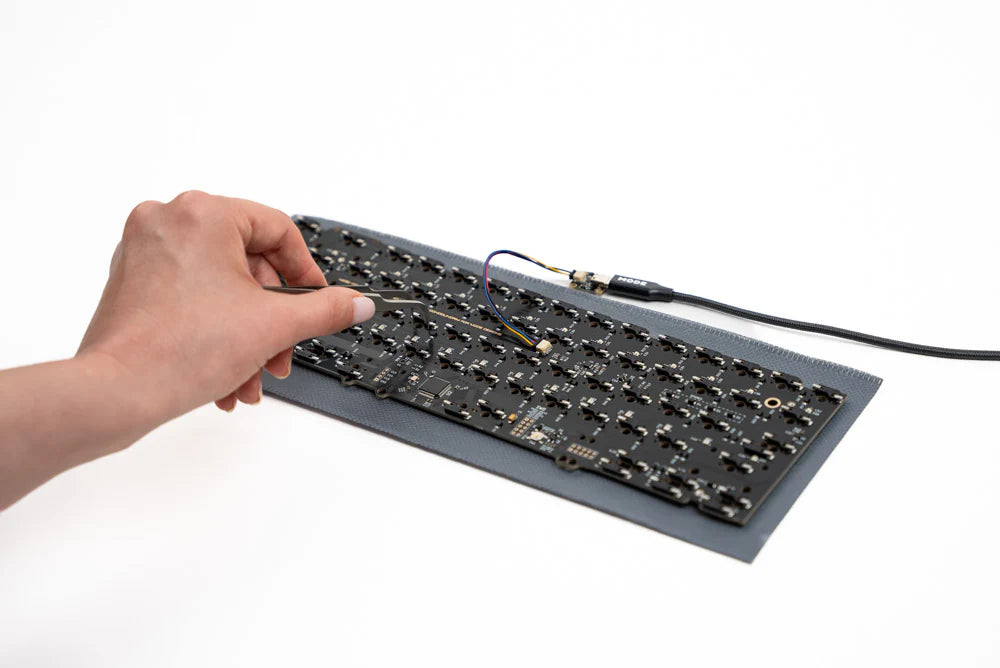

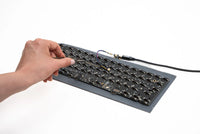
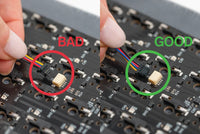
Do not skip this step; we cannot guarantee a replacement PCB that was not tested prior to assembly.
-
- Open VIA, navigate to the Key Tester tab, and enable Test Matrix mode.
-
- Place the PCB facedown, connect the daughterboard to the PCB, and plug it in.
-
- Touch the ends of your tweezers to the metal contacts under each switch position, lighting up each key in VIA. Note that the function key may not light up.
-
- In the rare event that keys do not light up, pause your build here and contact support@modedesigns.com.
Step 4: Install Stabilizers
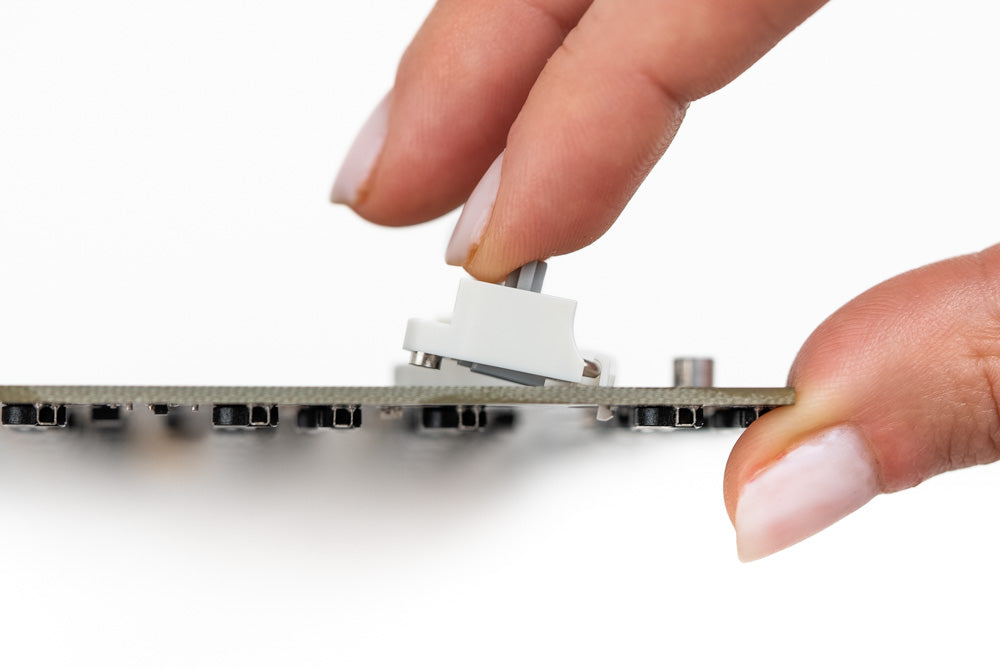

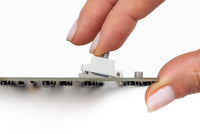
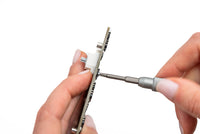
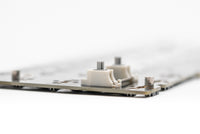
Stabilizers ensure that long keys actuate properly, no matter where you press. The stabilizer wire you need for the spacebar will depend on your choice of layout.
-
- Insert the non-threaded end of the stabilizer into the larger cutout on the PCB, then pivot the threaded ends into place.
-
- Ensure that your stabilizers are completely flat on the PCB before screwing them in.
-
- While bracing the front of each stabilizer, screw it into place from the underside of the PCB. Repeat for the remaining stabilizers.
Step 5: Attach Daughterboard to Bottom Case
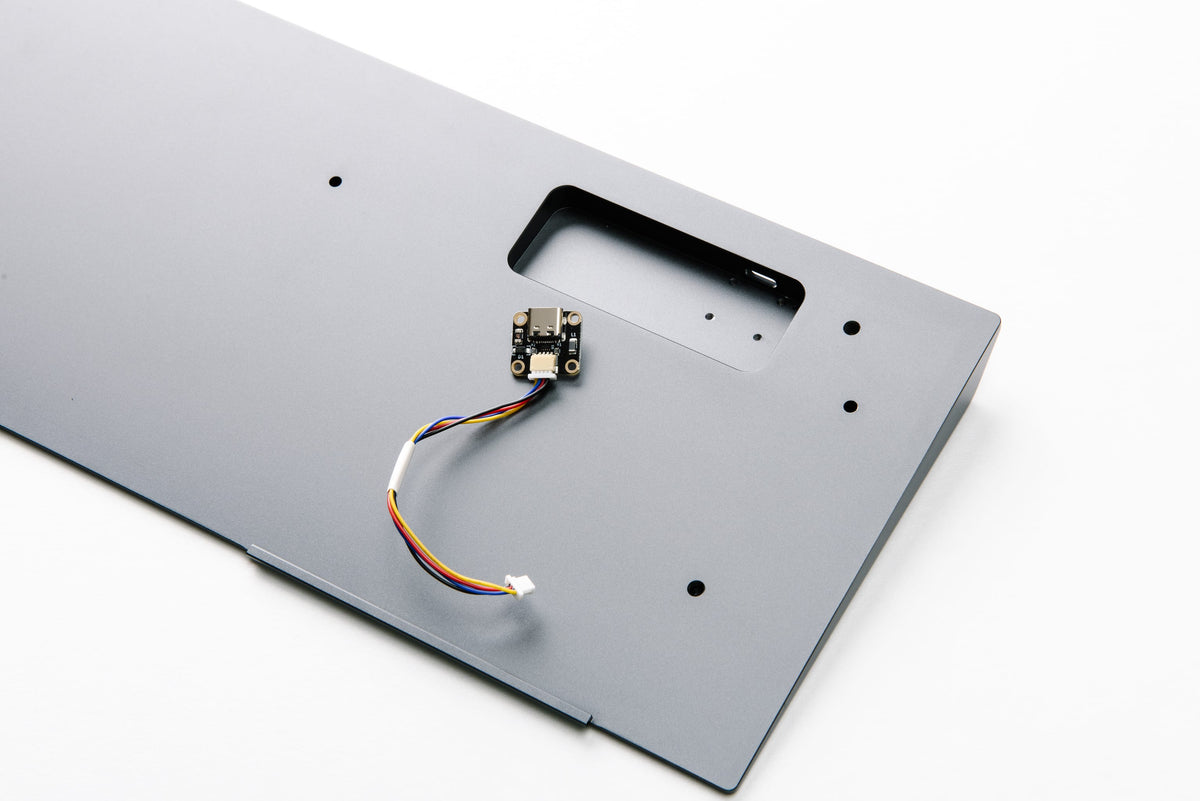


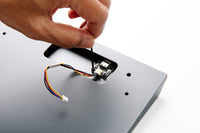
-
- Disconnect the daughterboard cable from the PCB.
-
- With the cable connected to the daughterboard, fasten it into the bottom case using the M2x3 screws (4 total).
-
- Take care to not overtighten the screws, or you may damage the daughterboard.
Step 6: Notice for Softer Plates


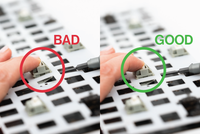

If you are using a softer plate material such as Nylon, PP, Pom, or PC, ensure switches are fully seated. We recommend using the screwdriver to carefully lift the plate while pressing down on the switch to ensure the switch is seated flat on the plate.
-
- Install your first few switches around the plate as shown, this will help ensure the plate stays aligned during the installation process.
-
- Install remaining switches, working your way in from the corner switches.
Step 7: Install Switches
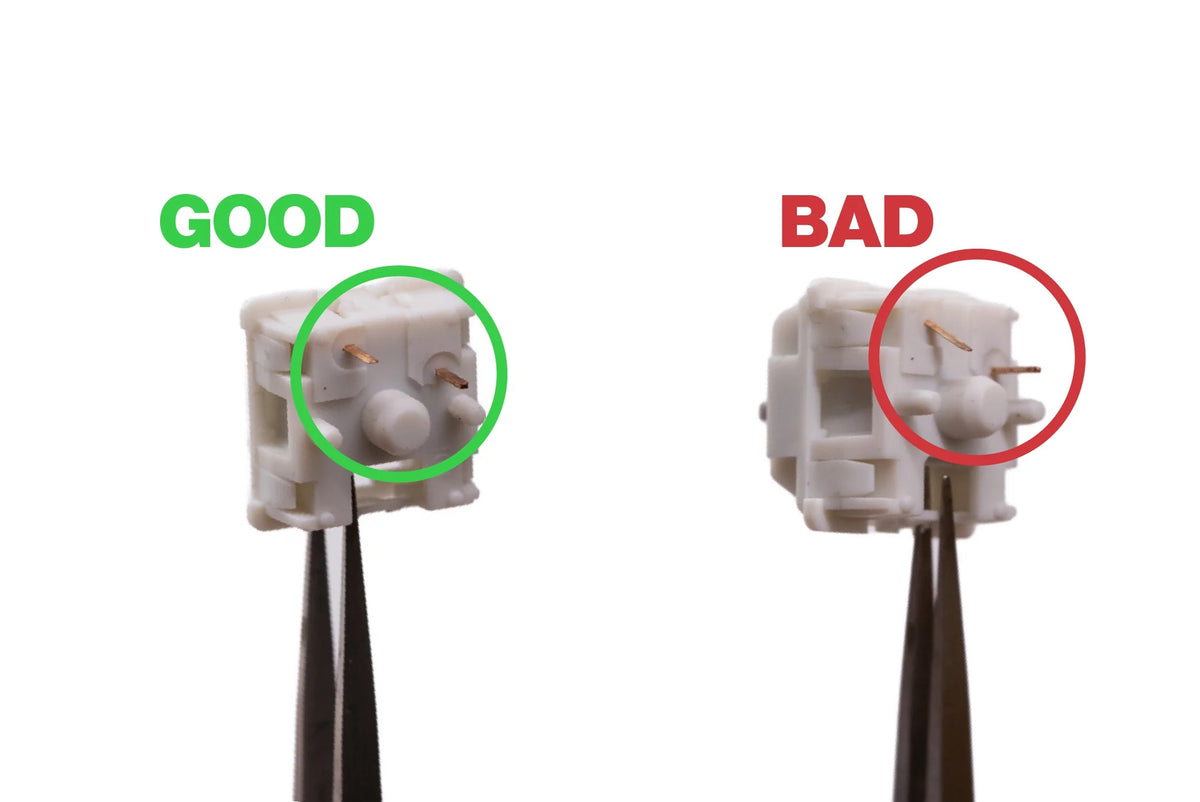

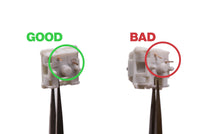

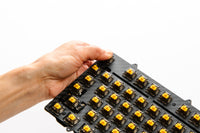
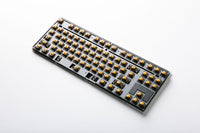
-
- Before installing your switches, inspect them to ensure the two metal pins on the underside of each switch are straight. Straighten all pins with tweezers if any are bent.
-
- If you plan to use the optional plate foam for a more dampened sound, lay it on top of the PCB now.
-
- Insert switches into the plate/PCB. Take care to brace the back of the hotswap socket with a finger while pushing the switches into place with your thumb. Do not apply downward pressure to the surface of the plate itself.
-
- If you have a solder PCB, solder your switches now.
Step 8: Check Switch Installation
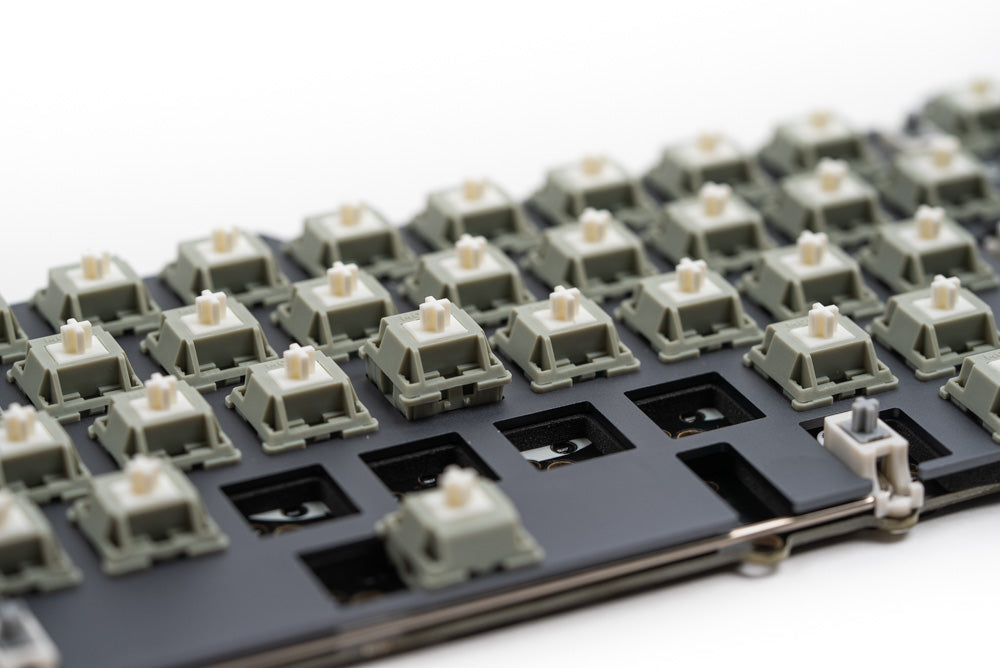



Switches that are not properly installed can cause alignment issues when the case is closed.
-
- Check that the plate is not sagging below the tops of the switches.
-
- Check that each switch pin is fully seated into the PCB.
Step 9: Insert Plate/PCB into Top Case


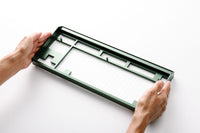
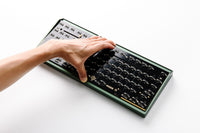
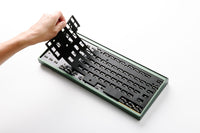
-
Place the top case facedown.
-
Gently lower the plate/PCB assembly into the top case using the three alignment posts.
-
Lay the bottom gasket on the underside of the PCB. Align the cutouts with the hotswap sockets if using the hotswap PCB.
Step 10: Attach Daughterboard Connector
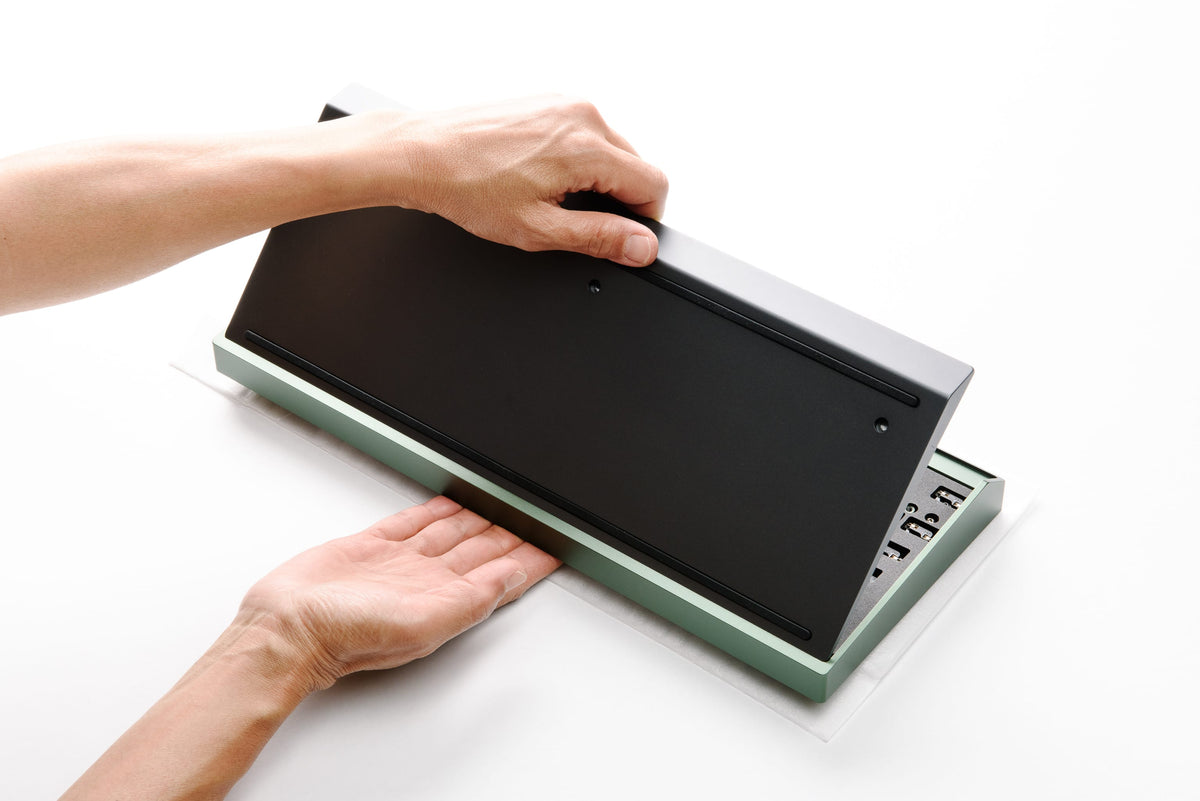

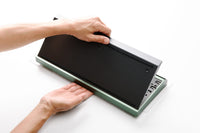
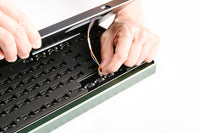
-
Hold the bottom case firmly in one hand and align it with the notch on the bottom edge of the top case.
-
While still holding the bottom case, use your other hand to attach the daughterboard cable to the PCB.
Check the orientation of the daughterboard cable and ensure that it is fully plugged in. It should not come loose if inserted properly.
-
Close the bottom case onto the top case, ensuring that the cable sits inside the recessed area of the bottom case.
Step 11: Secure Bottom Case
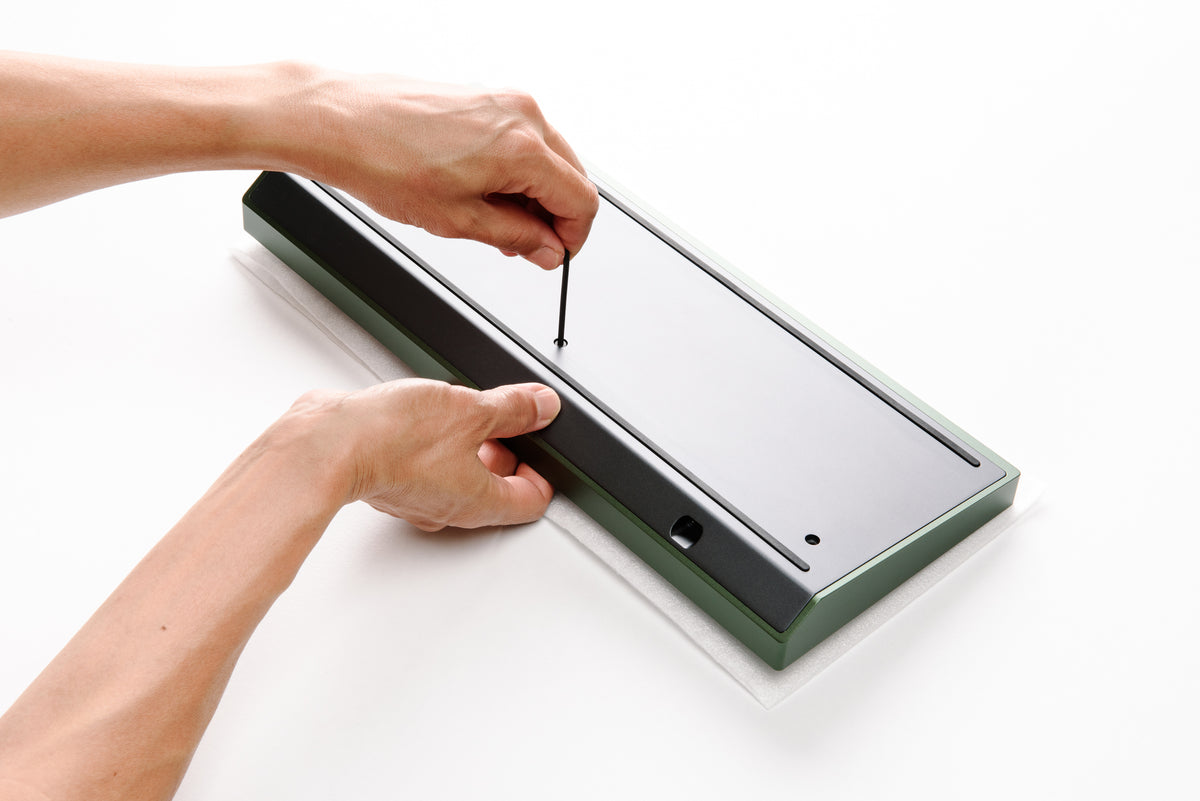

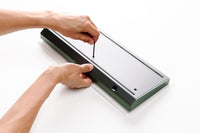
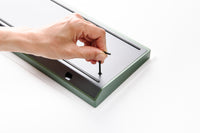
-
Pinch the top and bottom case together with one hand, and fasten the center M3x12 case screw into place with your other hand.
-
Fasten the remaining two M3x12 screws.
Lightly tighten the screws as needed such that the top and bottom case are flush. Do not overtighten.
Step 12: Install Keycaps
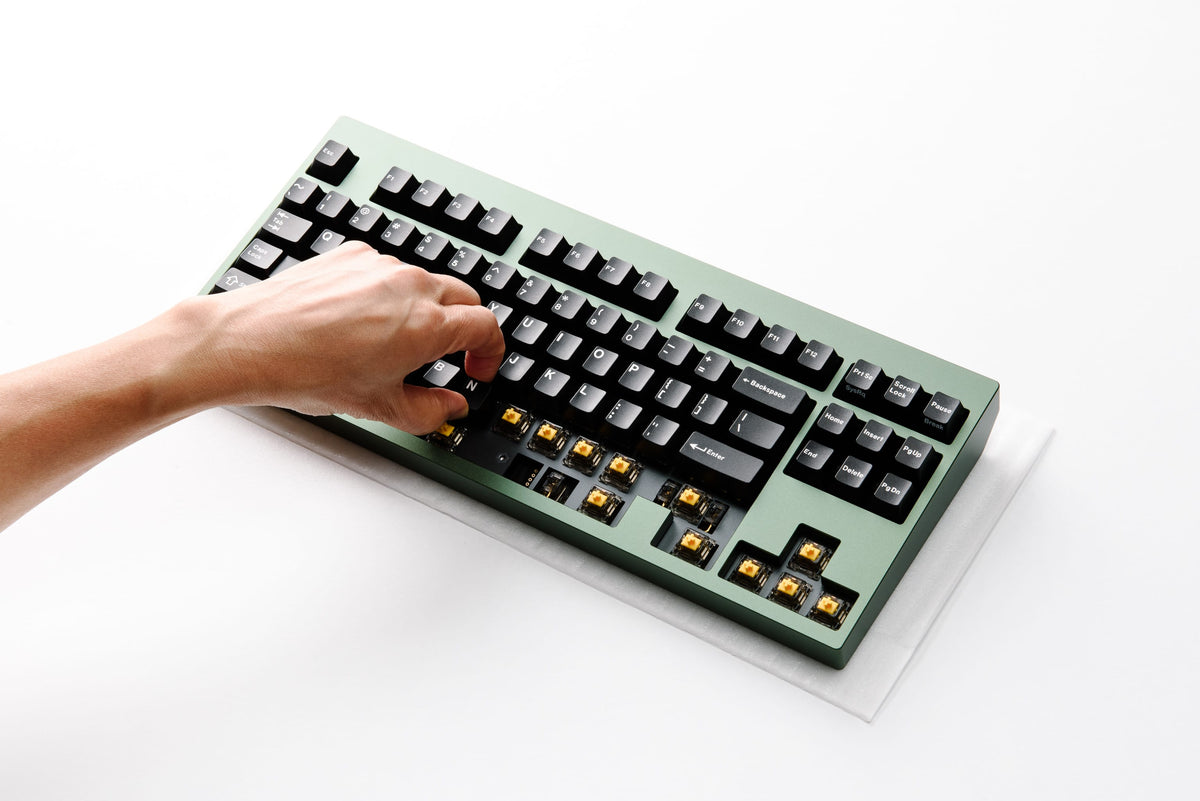

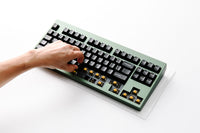
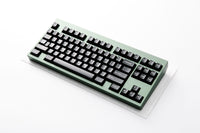
-
- Install your MX-compatible keycaps.
If you notice there is any rubbing of keycaps against the case, remove the bottom case and ensure that the plate/PCB assembly is properly aligned. It may shift slightly during final assembly.
Step 13: Tune Stabilizers
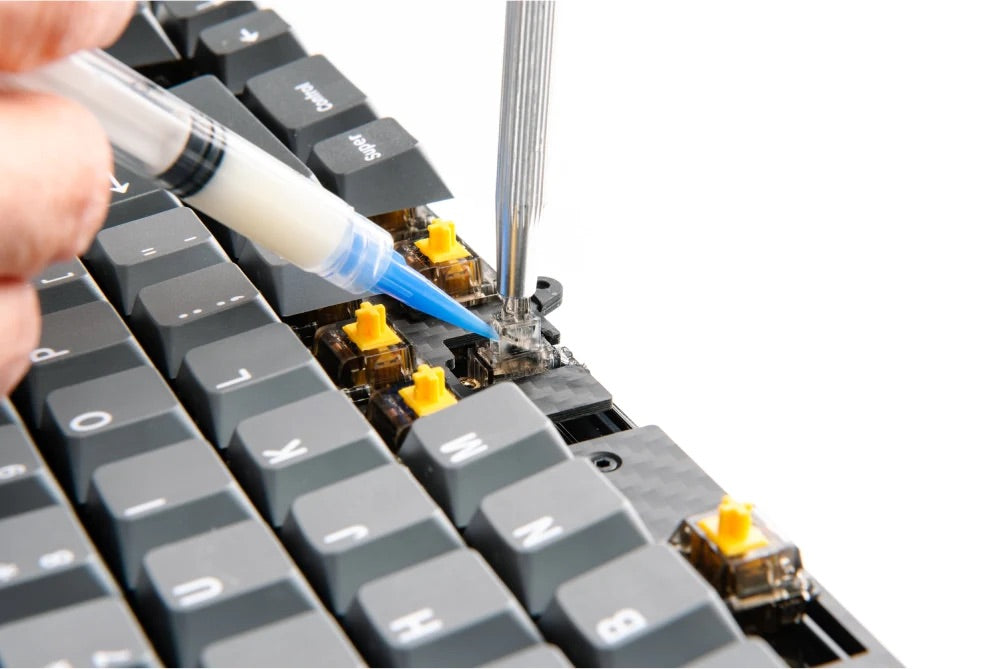

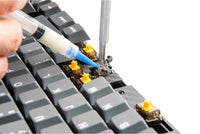
-
- Test the stabilized keys for any undesired rattling noises.
-
- If rattle is detected, lift the corresponding stem up and inject lube into the slider around the ends of the stabilizer wires.
Step 14: Set macOS layout
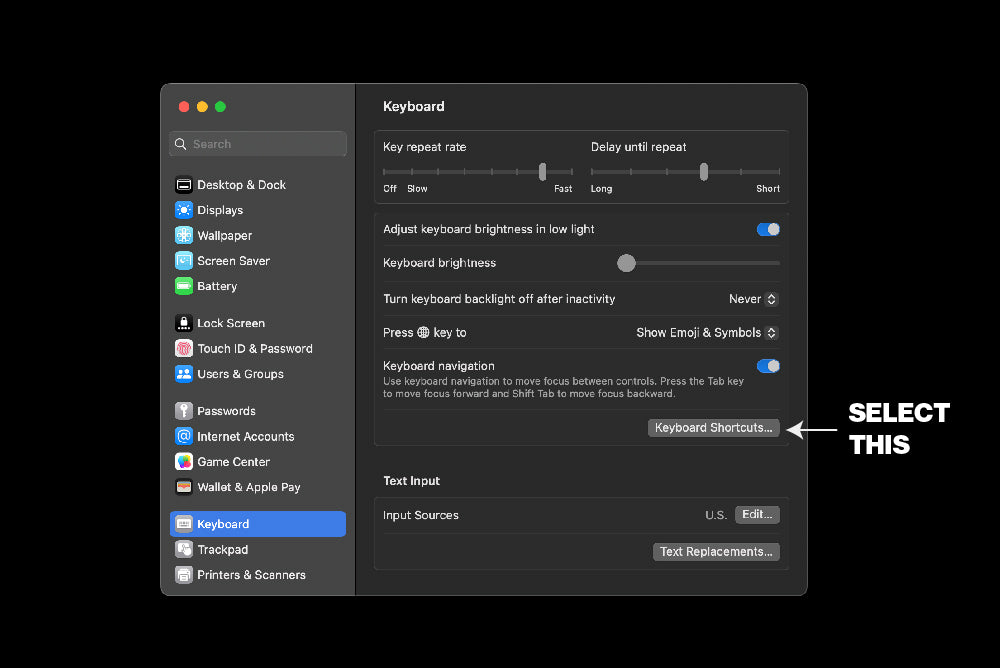


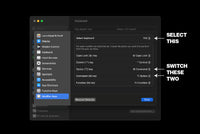
If you are using your keyboard with a Mac, switch the Command and Option key positions in System Preferences. You will only need to do this one time, and the positions will be correct for both Mac and PC usage.
Step 15: Program Keymap in VIA/QMK
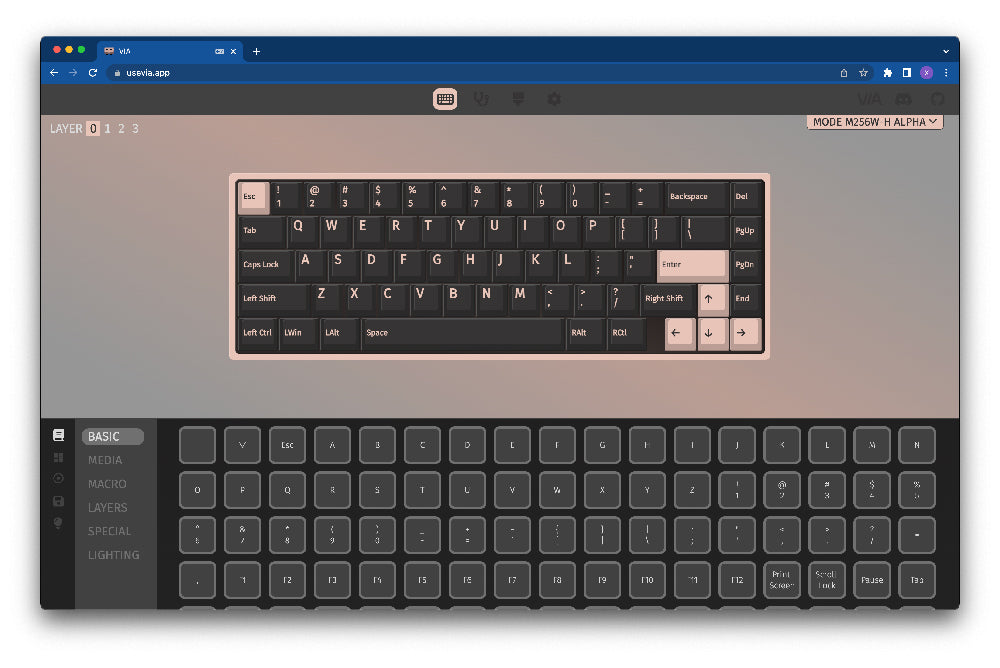

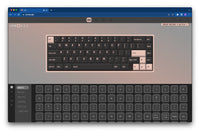
This keyboard is fully compatible with VIA and QMK. You can use the graphical interface of VIA to program any of the keys or layers.
-
If using QMK, you may enter bootloader mode by pressing the physical reset button on the board or pressing Fn + Esc.
-
If any of the keys do not actuate properly, it may be due to a bent switch pin during installation. Remove that keycap and switch using a keycap/switch puller. If any metal pins are bent, straighten them with a pair of tweezers.
Happy Typing
We hope you had a smooth build experience and would love to see the end result! Post your build in our photos channels on Discord or tag us on Instagram @modekeyboards. If you have any feedback you'd like to share with us, you can reach out to hi@modedesigns.com.
